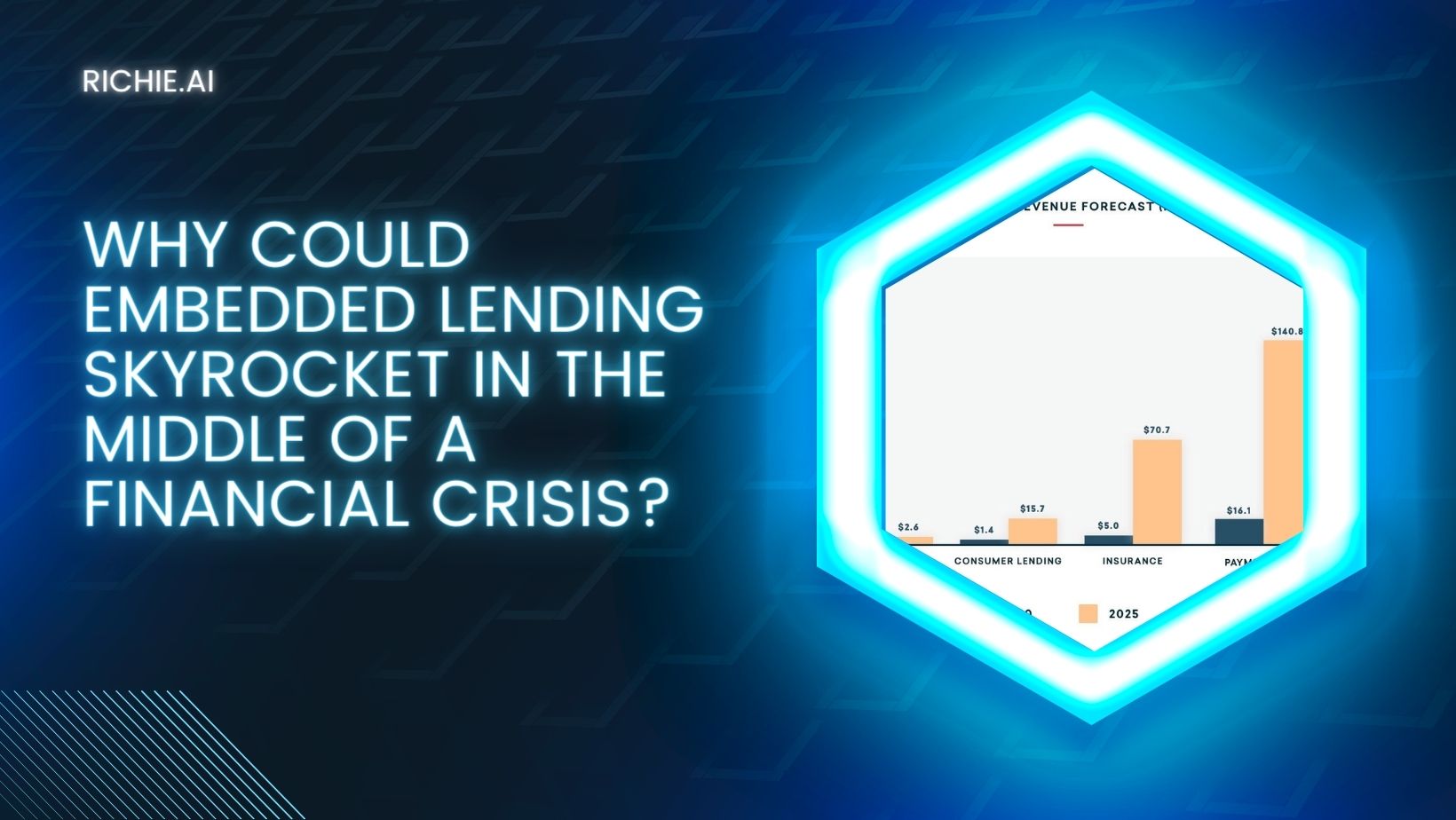
Why Could Embedded Lending Skyrocket in the Middle of a Financial Crisis?
The world is in the middle of a financial crisis. US stock markets are falling, as shown in the S&P 500 chart below.

https://www.tradingview.com/x/qlzTHDoY/
However, the crisis is not all about the markets. The US economy is also shrinking. The United States is officially in a technical recession due to GDP reduction in Q1 and Q2.

https://www.cityam.com/us-plunges-into-recession-as-rest-of-world-braces-for-similar-fate/
The economic recession has an impact on employment. Companies start selling fewer products and services. People have less money. As a result, when companies don’t have money because of lower sales, they apply for bank loans or use credit cards to keep operations running. As a matter of fact, the traditional banking system is also facing problems. The interest rates are going up. To fight inflation, the Federal Reserve has been raising the Federal Funds Rate, the interest rate the economy uses as a reference. The Federal Funds Rate has gone from 0.25% in January to 3.25% in September, as shown in the chart below. Powell has been clear that the rates will keep on rising until inflation is under control.

https://tradingeconomics.com/united-states/interest-rate
Hence, the interest rates have been raised in the US banking system. For example, the borrowing costs jumped from nearly 3% to almost 7% in just a few months, seen in the chart.

The rate increase has severe consequences for the economy. When the interest rates go up, companies cannot pay their debts because their payments have increased too. They cannot take loans, either. Banks won’t lend them money because these companies cannot prove their solvency. That is where embedded lending comes in as a solution for companies that need loans to finance their operations.
Embedded lending is a lending system offered through non-financial services. It is not offered directly by banks or other financial institutions. This is a more agile and cost-efficient way for companies to finance their operations such as buying inventory or paying salaries. This method has a more relevant impact on merchants.
Traditionally, merchants owned a physical store and sold directly to customers. When merchants needed finance, they went to a bank and got a loan or credit card by submitting a bundle of documents since the bank had no information about them.
Nowadays, many merchants sell online through other companies, like Amazon, who have all the information about their merchants. For example, sales. Embedded lending allows companies like Amazon to offer loans directly to their merchants through their websites at a lower cost and eliminate bureaucratic steps. As the company has all the data, it can automatically calculate how much credit it can offer to its merchants.
As a result, in a context where banks are becoming more expensive and more reticent to give credit, embedded finance has the potential to skyrocket. The best part is that banks are not falling behind. Banks finance companies like Amazon through embedded finance. According to Lightyear Capital Study, embedded finance could grow at a rapid pace, and embedded lending could jump from 1.4 billion dollars in revenue in 2020 to over 15 billion in 2025.

https://www.amount.com/blog/embedded-finance
Embedded lending is not only growing within the United States but all over the world, particularly in Latin America. In an interview by Iupana in Argentina, the Director of Loan Strategy of Mercadolibre, an Argentinian fintech company similar to Amazon, it was reported that 80% of borrowers in Argentina, including merchants, don’t use traditional banks anymore. Instead, they choose alternatives such as embedded lending. In addition, according to ResearchAndMarkets.com, “Brazil's Embedded Finance industry is expected to grow by 45.3% on an annual basis to reach US $3,741.9 million in 2022”.
Embedded lending by all accounts is shaping up to grow substantially. Banks will lend less money directly to merchants at a higher rate, as the Fed continues to raise the federal funds rate. Nowadays, merchants demand less bureaucratic and more cost-efficient ways to get loans. Embedded lending will inevitably fill those gaps.
In our opinion, despite the looming financial and economic crisis, the embedded lending industry will skyrocket over the next years.
To get updates and read more articles, subscribe to our LinkedIn page.
#b2bsaas #embeddedlending #skyrocket #financialcrisis














































.png)





















































































































.png)


















.png)




